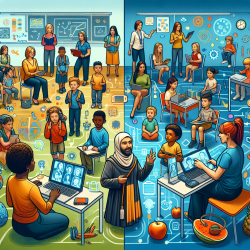Introduction
The advent of Industry 4.0, characterized by the integration of digital and physical systems, presents transformative opportunities for healthcare systems worldwide. However, its impact is particularly significant in low- and middle-income countries (LMICs), where resource constraints and infrastructural challenges often hinder healthcare delivery. A recent systematic review, "Impact of Industry 4.0 on Healthcare Systems of Low- and Middle-Income Countries," provides valuable insights into the current state and potential of digital technologies in these settings.
Key Findings from the Systematic Review
The review synthesized findings from 72 articles, revealing that the application of Industry 4.0 technologies in LMICs is still in its nascent stages, with significant potential for growth. The study identified mobile health and telemedicine as the most widely adopted technologies, while areas like augmented reality, additive manufacturing, and digital twin technologies remain underexplored.
Opportunities for Practitioners
Practitioners in LMICs can leverage these findings to enhance healthcare delivery by focusing on the following opportunities:
- Telemedicine and Mobile Health: These technologies can bridge the gap in healthcare access, particularly in remote and underserved areas. By implementing telemedicine solutions, practitioners can provide consultations and follow-ups without the need for physical presence.
- Augmented Reality and Simulation: Though currently underutilized, these technologies offer potential for training healthcare workers and simulating complex medical procedures, thereby enhancing skills and reducing errors.
- Big Data and AI: By harnessing big data analytics and artificial intelligence, healthcare systems can improve decision-making, predict disease outbreaks, and personalize patient care, leading to better health outcomes.
Encouraging Further Research
The review highlights several research gaps that practitioners and researchers can explore to further optimize healthcare systems in LMICs:
- Investigating the integration of augmented reality and virtual reality in medical training and patient care.
- Exploring the potential of additive manufacturing for producing affordable medical devices and prosthetics.
- Developing digital twin technologies to simulate and optimize healthcare processes and supply chains.
Conclusion
The systematic review underscores the transformative potential of Industry 4.0 technologies in enhancing healthcare systems in LMICs. By focusing on the opportunities and addressing the research gaps identified, practitioners can significantly improve healthcare delivery and outcomes. For those interested in delving deeper into the research, the original paper provides a comprehensive analysis and can be accessed here.










